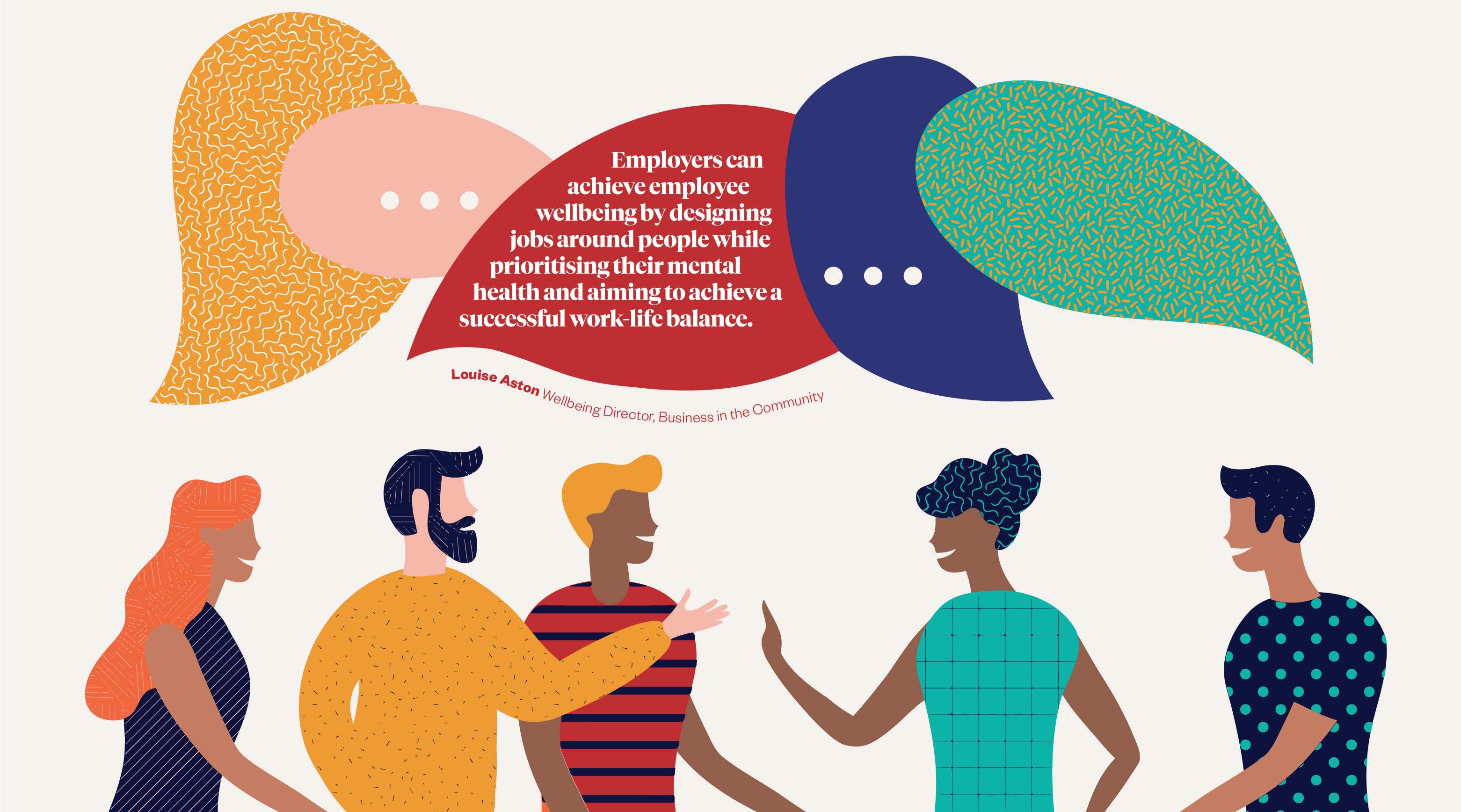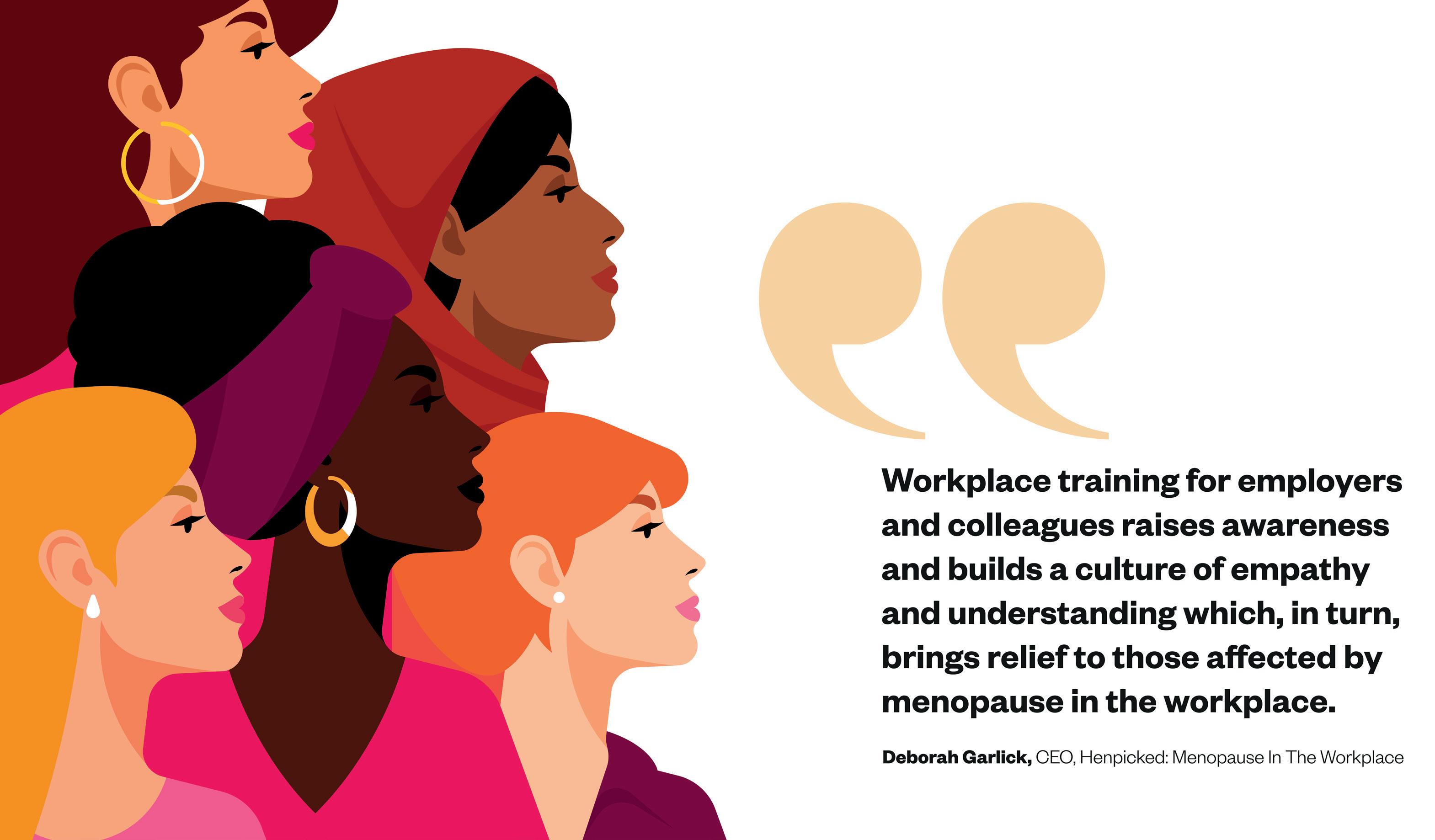






Life isn’t a level playing field, nor is the workplace. Employers acknowledging this and acting to create better equity between employees will draw in the wider range of talent and skills needed in today’s fast-changing world.
In March, REBA published its ‘Gender-Specific Benefits Research 2023,’ in association with Peppy, to discover how employers are using employee benefits to enhance workplace equity between genders.

Re-examine conditions for workplace equity
While many factors play into the disadvantages that women experience throughout their careers, biological reproductive health is one of them. Only biological females can get pregnant and bear children, menstruate and experience menopause (even if they identify as a man). They are the biological sex more likely to take time away from work for reasons linked to reproductive health.

Workplace career development and pay progression do not traditionally make allowances for people taking time off for childcare, parenthood, miscarriage and painful periods. People experiencing these can find it harder to maintain their career tracks and are left to fall behind.
For those who choose to — or have to — work (full/part/flexi-time), there must be cleverer ways to avoid this talent stunting and loss that impacts one sex more than the other.
The insight data in this report shows the stark link between female-specific wellbeing conditions and the wealth gap in our workplaces and societies. REBA’s research also clearly demonstrated a high-level workforce impact of inequity and lack of gender-specific support in organisations. Nearly two-thirds of employer respondents said that the inability to attract and retain enough women into their workforces is a future risk to their businesses. Nearly 9 in 10 have an HR objective to increase the number of women in leadership roles (compared with just 3% saying they face a challenge getting men into leadership).
While more than 8 in 10 aim to improve the career prospects of women, just a quarter say the same for men. With drives to create equity between groups (such as changes to policies and conditions), revised strategies can benefit all.
Enhancing parental leave and related pay, closing pay gaps, giving time off to carers and so on do not discriminate between men and women, but do begin to tackle deeply embedded inequities at work that affect us all.
Unprecedented pressures on UK businesses and unhealthy ways of working are in the way of employee wellbeing and engagement.
The UK’s businesses and society are facing a storm of issues — ongoing disruption from Covid-19, an uncertain post-Brexit environment, the cost-ofliving crisis, an overstretched NHS, the climate emergency and widening social inequalities.
Effect of mental health on employee engagement
Poor mental health issues cost the UK economy almost £118 billion annually, with 72% of this due to lost productivity related to employees who are either experiencing mental health problems or caring for others with poor mental health.
This is supported by research from Business in the Community (BITC) into the cost-of-living crisis, which found that almost half of adults felt their current financial situation has negatively impacted their mental health.
Despite knowing the costs of poor mental health, this is not translating into change at a time when business leaders need to prioritise employee wellbeing. Now, more than ever,
employers should take the opportunity to put people at the heart of their organisational purpose and business strategy.
Better employee engagement with work-life balance
Employers can achieve employee wellbeing by designing jobs around people while prioritising their mental health and aiming to achieve a successful work-life balance. Research shows that 84% of employees feel more productive when they have a sense of wellbeing, and almost two-thirds of employees would accept a lower-paid job for a positive work-life balance.
Flexible work is increasingly in demand, but few jobs offer this even though job advertisements offering flexible work attract 30% more applicants than inflexible roles. Employers must redefine the business case for investment by focusing on the benefits of a thriving workforce rather than the costs of a struggling one. By prioritising and investing in people, the potential for success is immense.
Many companies are still failing to prioritise the wellbeing of their workforce alongside other risks, warns an industry expert.
While firms prioritise economic, reputational, operational and financial risk, ‘people risk’ rarely features highly on the corporate agenda. But timely steps to ensure staff wellbeing can prove pivotal in a company’s success.


People risk
Julia Turney, a partner with a risk, pensions and investment consultancy, warns that the financial wellbeing of a workforce, particularly during the cost of living crisis, is as important as physical, emotional and mental welfare.

This, she emphasises, is more about providing knowledge and education to help people make effective financial decisions in their lives. She suggests that ‘people risk’ — the risk of staff
underperforming as a result of welfare issues — must be a higher priority. “Companies should look at it as they would operational, financial, economic and reputational risk,” she says. “Whereas events such as reputational risk could be one-off, people risk is an ongoing risk. If people aren’t engaged, performing, happy at work and being productive, that is a huge risk to the business.”
Employer DNA Turney, who is Head of Platform and Benefits with Barnett Waddingham, outlines how companies can minimise that risk and look after their people.
“Understand your employees. Stresses can depend on the environment such as being physical in more manual jobs, mental health or a combination.”
Turney, who leads the company’s employee wellbeing and engagement platform called ‘4me,’ says employers should use data and analytics to understand their workforce.
“We call it understanding your ‘employer DNA’,” she adds. If productivity has gone down or absence is increasing, analytics can form the basis of a plan to address that.
Financial wellbeing
She points to the value of improving financial literacy as a step to improving mental health. Barnett Waddingham, which employs more than 1,500 people in nine offices, offers financial wellbeing seminars, pension help and guidance — and has mental health first-aiders as part of its own employee engagement initiatives.
“We have adopted an open culture which helps with employee wellbeing,” she continues. “The senior partner’s door is always open. We do not have barriers at Barnett Waddingham.”

Lack of employee wellbeing programmes covering financial, emotional, mental and physical health can lead to low morale, falling productivity, rising absences and staff turnover with increased recruitment costs.
“You need a well, happy and engaged workforce to continue economic growth within an organisation,” she concludes.
What ‘people risk’ and ‘employer DNA’ mean to your workforce’sINTERVIEW WITH Julia Turney Partner and Head of Platform and Benefits, Barnett Waddingham WRITTEN BY Mark Nicholls
The easy option is for organisations to cut during challenging times. There should be more investment in employee wellbeing going forward, and we discuss why.
We have had a myriad of challenges across the globe and are now facing some of the most difficult economic conditions for a generation. This, along with record burnout figures, the great reset and a purpose-seeking employee market, has given leaders some significant headaches going into 2023. However, looking back at previous downturns, it took bravery to make bold decisions, and history shows it works.
People at the core Organisations are nothing without their people — that’s a fact. How many times do you see on company websites saying that their people are their most important asset?
Well, let’s test that theory.
Wellbeing holds the key to many of these challenges, and that is what workers of all ages are looking for and expect — a personalised approach to wellbeing that delivers for all; a purpose-driven organisation with authentic and empathetic leadership that provides human connection in an inclusive environment.
Investment in these areas of your company’s strategy is essential, not only for the short-term business challenges but also for the medium to longer-term future. Recessions are not for forever, and as we emerge to growth, you will need a highly engaged, productive — and most importantly — healthy workforce to deliver your productivity targets.
Wellbeing as a legal requirement
Legislation is coming, too. The NSW Government in Australia have implemented legal requirements for employers to create mentally healthy workplaces, and the Dutch Government is to become the first country in the world to codify the right to remote work into law.
Conversations and debates in the UK’s parliament have resurfaced recently with Dean Russell MP presenting a new law requiring businesses to offer mental health first aid training. This focus is not just great for business productivity or legislative reasons, it is the right thing to do for everyone.
Our organisation will be recruiting this year, growing the team and investing more in the wellbeing of our people. So, we challenge you as organisations to look beyond the short-term and go into the future of work with gusto. Don’t just talk about how important your people are on your website — invest properly in the wellbeing of your colleagues, reap significant rewards and build a healthy culture that delivers on all levels.
WRITTEN BY Chris Cummings CEO, Wellbeing At WorkMental health is one of the main causes of workplace sickness in the UK. Helping people stay mentally well should be a priority for every business.
There are many ways people’s mental health can be negatively affected at work, including stress, having poor relations with your colleagues or line manager, or being treated unfairly because of your mental health problem (experiencing stigma).
Line managers can make a real difference
One of the biggest issues is the relationship between employees and line managers. Mind’s Workplace Wellbeing Index demonstrates a clear correlation between the mental health of employees who have effective relationships with their line manager and those who do not. As such, line managers need to ensure they are fostering effective, professional relationships with their line reports. Ensuring team members are clear about what is expected of them and supported in the delivery of their work is key.
What can managers do for staff?
The first step is for managers to ask the member of staff how they can support them. Adjustments need not be expensive, typically they might include flexible hours or changes of start or finish time; change of workspace; return-to-work policies such as a phased return; changes to their role (temporary or permanent); changes to break times; increased support from managers in prioritising and managing workload; or provision of quiet rooms.

Being empathetic and person-centred is vital, including having one-to-one conversations with employees to understand how they best perform at work and how managers can best support them to excel. Our Wellness Action Plans – available for free from Mind’s website – can be a useful starting point to facilitate discussions between managers and their direct reports.
Change the mental wellbeing culture
We want employers to see promoting good mental health as more than a legal obligation, but part of being a responsible employer and sending a message to staff that they are valued and appreciated.
Changing the negative culture around mental health and tackling the causes of stress and poor mental health at work will benefit all staff — whether they have a diagnosed mental health problem or not.
WRITTEN BY Andrew Berrie Head of Workplace Wellbeing, Mind
Investing in a healthy workforce can lead to a successful business
Work and mental health: how can we do better as managers?
One of the biggest issues is the relationship between employees and line managers.
Mental health support is critical to helping teams and businesses thrive. But in the face of record demand, how can you effectively scale up your workplace wellbeing strategy?
Employers are under increasing pressure to provide effective mental health support to their teams. In the face of record demand, Asim Amin — founder and CEO of leading mental health platform Plumm — explores how technology is empowering employers to build impactful and scalable wellbeing strategies.

Mental health stigma subsides but care shortages persist
WRITTEN BY Asim Amin CEO & Founder,In recent years, we’ve seen a noticeable shift in people’s willingness to openly discuss mental health. This shows we’re making great strides in breaking down long-standing stigmas and in recognising its critical role in overall wellbeing. However, the demand for mental health support continues to outstrip supply, largely driven by the Covid-19 pandemic which triggered a 25% increase in the prevalence of anxiety and depression worldwide. Workplace burnout is at an all-time high, adding to the immense pressure on overburdened mental health services. This fuels the urgent need for safe and scalable employee wellbeing solutions.
Tech-led triage is a ‘game-changer’
mental health triage chatbot, giving patients access to psychological therapies more quickly and easily. This was built to address capacity challenges, with the latest data showing a 21.5% increase in people accessing NHS talking therapies services over the last year.

As a leading workplace mental health platform, the team at Plumm have been working on utilising AI to offer safe, scalable and self-guided care. Building AI-powered solutions is especially exciting as it enables businesses to deliver 24/7 care and connect people to virtual support (such as chat therapy or meditation) much more efficiently. The key is to create a human-centric digital experience where a clinician can step in when more specific and sensitive care needs are present.

With a tech-enabled mental health platform, HR and wellbeing teams can create a scalable workplace wellbeing ecosystem focused on prevention rather than intervention which is a real game-changer.
Artificial intelligence (AI) is an exceptional technology that can aid this demand by using clinician-developed automation, augmented by machine learning, to help connect people to the right services at the right time.
The NHS is already harnessing the power of AI with its
With a tech-enabled mental health platform, HR and wellbeing teams can create a scalable workplace wellbeing ecosystem focused on prevention rather than intervention which is a real game-changer.
Helping teams and businesses thrive
Poor mental health can affect productivity, morale and physical health, leading to increased absenteeism. Companies that recognise employee health and business health are interdependent will reap the benefits through business growth. Investing in employee wellbeing is a catalyst for positive change — and thanks to the application of leading-edge tech, we can enable that change, helping both employees and businesses thrive.
Menopause in the workplace is as much an employment issue as it is a health issue.
Debilitating, common symptoms — including hot flushes, headaches, irregular or heavy periods, anxiety, low mood, ‘brain fog’ and loss of confidence — are compounded by the stress and worry of experiencing them at work. Understanding, empathy and flexibility go a long way to help people work around their menopause symptoms — both in and outside the workplace setting.
Importance of menopause in the workplace
Awareness of menopause in the workplace is higher than ever, and the recent publication of the ‘Menopause and the workplace: Government Response to the Committee’s First Report of Session 2022–2023’ brought it back into the spotlight.
While the Government didn’t accept all the recommendations, it did approve appointing a Menopause Employment Champion, reducing the cost of HRT, education within schools, running a public health awareness campaign, allowing flexible work hours and implementing bespoke workplace policies.
Simple strategies for menopause in the workplace
Workplace training for employers and colleagues raises awareness and builds a culture of empathy and understanding which, in turn, brings relief to those affected by menopause in the workplace.
Making small and reasonable workplace adjustments can also help, such as positioning desks away from heat sources, having breaks in meetings, providing cool fresh water, supplying desk fans, allowing flexible work hours and setting aside a quiet breakout room. Neither onerous nor costly, these small changes make a big difference.
Bespoke policies for menopause support
We advise the first step for responsible employers is to ask employees: ‘What’s getting in the way of you being at your best, and what would help you?’ Hosting a menopause training session is also a great way to get the conversation started across an organisation.

Areas of concern arise from these sessions and help to shape a bespoke menopause policy that suits the workplace and its workforce and identifies any specific aspects that need to be addressed.
Open discussions around menopause
In 2016, when we first started working with employers, we couldn’t find any menopause workplace policy. Fast-forward to today, we have an environment where women’s health at work during this key time of their life and career is more appreciated and recognised.
Feeling psychologically safe, supported and understood provides relief and can improve the experience of working through menopause. By keeping the conversation going and the changes coming, we will continue to improve women’s health — and happiness — at work.
WRITTEN BY Deborah Garlick CEO, Henpicked: Menopause In The Workplace
In 2016, when we first started working with employers, we couldn’t find any menopause workplace policy.
Workplace wellbeing, diversity and inclusion are currently in the spotlight, but actively supporting team members through difficult life events is more than grabbing headlines. Fertility Matters at Work (FMAW) partners with Selfridges to be the first retailer committing to becoming fertility friendly through education, awareness, policy and events.

A culture change that includes fertility policies
To successfully equip people facing fertility struggles with the appropriate support, employers must commit to a culture change. With fertility rates on the decline, the challenges within the workplace don’t just impact women; it also affects men and an increasing number of the LGBTQ+ community, 77% of which are already parents or intend to become parents, finds Family Equality Council. Trailblazing organisations are being strategic in how they communicate their fertility policies.

A fertility policy on its own isn’t enough Selfridges has not only introduced leading policy and guidance but has successfully bridged vital, sensitive conversations with training for managers and companywide events with continued momentum.

Jo Riddell, Head of Employee Relations, explains: “This conversation is particularly important as, whilst pregnancy and childbirth are highly visible, fertility challenges tend to

be invisible, silent and often shrouded in secrecy.”
Policy on its own isn’t enough to encourage people to disclose personal information, with research by FMAW showing that over 61% didn’t feel comfortable talking to their employer about going through treatment, leading to 69.5% hiding appointments through sickness absence and almost 36% considering leaving their jobs as a result.
Successful fertility policies need leadership support
The first panel event hosted by FMAW featured Maria Glasscock — Selfridges HR Director — who showed leadership through vulnerability by sharing her experiences and opening the door for others to share theirs.
Recognising the diversity of their workforce and how it intersects with fertility and family-building, the retail company collaborated with them for an LGBTQ+ family-building panel event during Pride Month 2022.
Jo Riddell shares: “Teams have fed back on how leaders sharing personal stories has also encouraged conversations, giving the confidence for more team members to step forward, share their experiences and reach out for help rather than stay silent.”
Hopefully, more organisations will follow in their footsteps in becoming fertility friendly to improve a culture where everyone can feel psychologically safe to bring their authentic self to work in the knowledge that their family-building journey will be recognised and supported.

